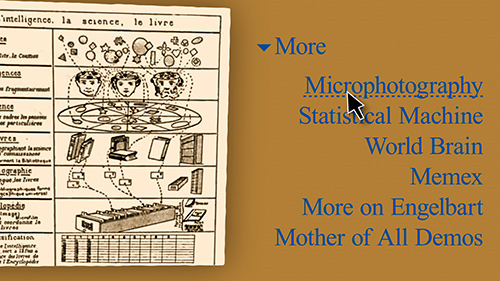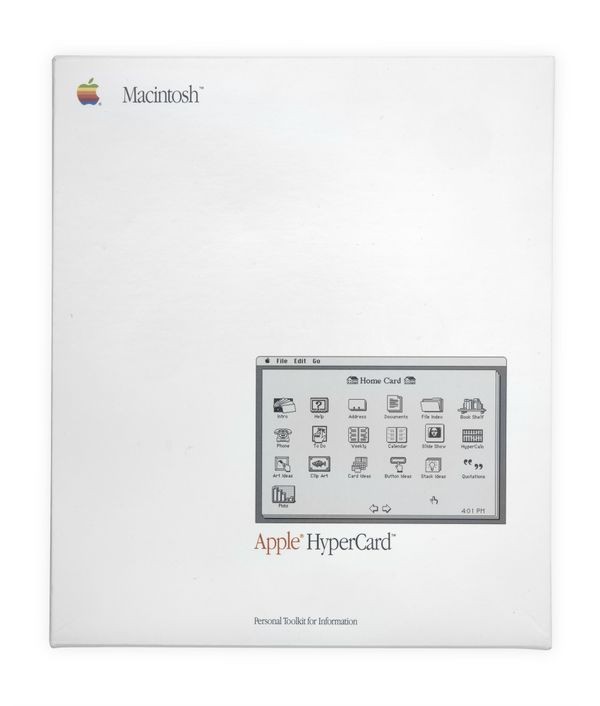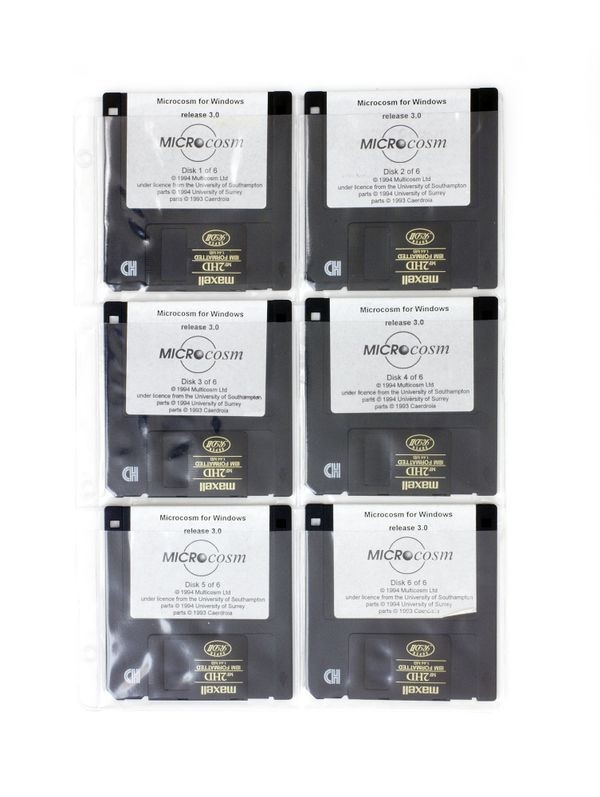Computer History Museum (original) (raw)
Navigating Information with Computers
Douglas Engelbart
Engelbart’s lifelong goal was to make computers into tools that would augment human intelligence for solving universal problems. His lab pioneered the mouse, multiple windows and networking.
Navigating Information with Computers
A Web-like system for organizing information must be a fantastic idea. After all, it’s been invented at least a dozen times since the microfilm-based Memex of the 1940s.
Some systems garnered millions of users and billions of dollars. Some didn’t. But only one, the World Wide Web, ultimately prevailed.
Navigating Knowledge: Hypertext Pioneers
As the volume of world knowledge became too vast any one person to know or catalog, a passion to organize, cross-reference, and share information arose in the hearts of some visionary technologists. Discover the ideas, inventions, broken dreams, and altruistic visions that led to today’s hypertext world.
Linking Knowledge
Information systems based on paper and microfilm were enormously difficult and expensive to build. In the 1950s, Ted Nelson and Douglas Engelbart independently suggested using computers instead.
They “computerized” the concept of cross-references, creating the clickable link we use on the Web. Nelson called it a “hyperlink,” and the computerized text “hypertext.”
Nelson and Engelbart both envisioned multi-user systems embracing elements of networking. They, and graphics pioneer Andries van Dam, developed many core computing functions such as word processing, remote collaboration, and elements of the graphical user interface.
Hypertext: Text which is not constrained to be linear, or even to be text.
—Attributed to Ted Nelson,
Andries "Andy" van Dam
As founding head of Brown University's Computer Science department, graphics pioneer van Dam and his students kept hypertext research alive for the twenty years before it became widely known in the 1980s.
The Secret History of Hypertext
“Click here.” Today’s hyperlink is a brilliant breakthrough from the 1960s. Hopping between linked pages is what lets us “surf” the Web instead of plodding through it. Yet hypertext virtually disappeared for 20 years, and was so obscure that the father of the Web may have unknowingly re-invented it in 1980.
Hypertext’s inventors -- and some true believers -- kept using it, but mostly in academic applications, or for specialized clients like the military. Most people weren’t aware of hypertext until commercial systems like Apple’s HyperCard in the late 1980s. And, later, the Web.
HyperCard
Hypercard was the first hypertext program to hit the mass market-- 25 years after its invention. Not networked, and with only simple linking, it offered a well-designed scripting language that made hypertext authoring accessible to amateurs.
Grolier Prehistoria CD-ROM
In the late 1980s and early 1990s, affordable data compact disk (CD) drives enabled multimedia encyclopedias, games, novels and reference information on CD, often with hypertext links for navigation. Many publishers later ported their content to the Web.
Microcosm for Windows 3.0
Microcosm, like competitor OWL Guide, was a full-featured but standalone hypertext system which had some commercial success. Microcosm was developed by University of Southampton, UK, researcher Wendy Hall, a leader in the hypertext and later Web communities.


